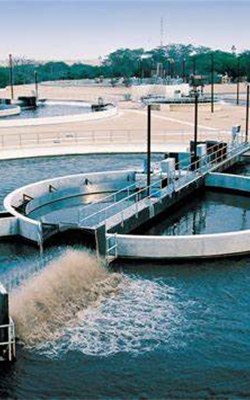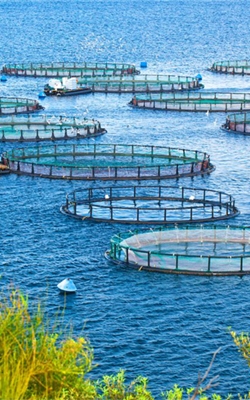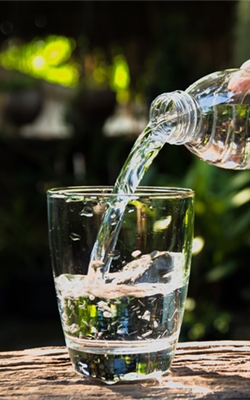SISCO portable digital chlorine detector features a negative LCD display that makes it easy to read and interpret results, even in low-light conditions. With a waterproof design and protection against high and low temperatures (5-60°C), this chlorine meter is built to withstand harsh environments and intensive use.

Equipped with a Sensitive Probe for Fast and Accurate Detection
- High-Precision Sensor: Equipped with a sensitive probe for fast and accurate detection of free chlorine levels in water.
- Digital LCD Display: Clear screen shows real-time chlorine readings, allowing easy observation and reliable results.
- One-Button Operation: Simple design enables quick testing — just immerse the probe in the water and press to measure.
- Portable Pen-Type Design: Lightweight and compact, ideal for on-site chlorine testing in pools, drinking water, and tap water.
- Wide Application: Perfect for swimming pools, spas, household tap water, aquariums, and food-grade water monitoring.

Multiple Platinum Detection Rings, Fast Reading
- High-Sensitivity Electrode Sensor: Designed with a precision probe that ensures accurate and stable chlorine detection, even at low concentrations.
- Easy Water Testing: Simply immerse the probe in the water sample to obtain quick and reliable chlorine readings within seconds.
- One-Touch Operation: User-friendly design allows you to turn on, measure, and calibrate with a single button — ideal for beginners and professionals alike.
- Durable & Waterproof Design: Built for long-term use in swimming pools, tap water, drinking water, and laboratory testing environments.
Applications
The SISCO portable digital residual chlorine meter is a highly versatile instrument designed to meet the diverse needs of water quality analysis across various industries. Its wide range of applications makes it ideal for monitoring drinking water quality, ensuring safety and compliance with health standards. In wastewater treatment, it provides accurate readings to support effective management and environmental protection. The device is also well-suited for aquaculture, helping to maintain optimal water conditions for aquatic life, and plays a valuable role in scientific research, enabling precise measurements for experimental studies.

Wastewater Treatment

Aquaculture

Scientific Research

Drinking Water Quality
| Model | SISCO-WQT-CL200 |
| Test Principle | Conductivity Measurement Method |
| Measurement Range | 0-999ppm |
| Measurement Method | Calibrate with tap water before use, automatically starts measuring |
| Temperature Range | 1°C to 99°C |
| Resolution | 1ppm |
| Error Range | ±5% FS |
| Test Environment | 5°C-60°C, test object temperature below 99°C |
| Power Saving Function | Auto-off after 60 seconds |
| Temperature Compensation | A.T.C. |
| Display Area | LCD (with backlight) |
| Completed Function | Beep: 2 at start, 1 at end; Backlight: Illuminates after measurement is complete |
| Battery replacement reminder | LOW icon flashes |
| Power Supply | 3.0V DC (AAA alkaline battery) |
Q1: What is a good TDS reading for drinking water?
A1: A good Total Dissolved Solids (TDS) reading for drinking water typically falls between 50 and 300 parts per million (ppm). Water with TDS levels within this range is generally considered safe and palatable, providing a balance of essential minerals without affecting taste or quality. While the World Health Organization (WHO) suggests that water with TDS levels below 300 ppm is acceptable, levels below 50 ppm may lack necessary minerals, and readings above 300 ppm can indicate excessive impurities or high mineral content, which could affect the taste and potentially pose health concerns over long-term consumption.
Q2: What industries is the digital residual chlorine tester suitable for?
A2: The digital residual chlorine tester is suitable for a wide range of industries, including drinking water quality monitoring, wastewater treatment, aquaculture, and scientific research. It is essential for ensuring safe and compliant water quality in drinking water systems, monitoring chlorine levels in treated wastewater, and maintaining optimal water conditions in aquaculture environments. Additionally, it is widely used in industrial water treatment processes, such as those in food processing, cooling systems, and chemical manufacturing. The tester also plays a crucial role in recreational water maintenance, such as swimming pools and spas, to ensure proper hygiene and safety.
Q3: What factors may interfere with the residual chlorine tester?
A3: Certain substances, such as arsenic and arsenates, sulfides, heavy metals, and nitrites, can interfere with the detection of residual chlorine. These chemicals may react with the reagents or the testing mechanism, leading to inaccurate results or distorted measurements.
Samples with high buffering capacity or extreme pH values can also cause interference. Water samples with strong buffering properties or those with pH values that are either too high or too low may affect the chemical reactions involved in chlorine detection, compromising the accuracy of the readings. It is important to consider these factors when performing residual chlorine testing to ensure reliable results.
Samples with high turbidity or color can interfere with the residual chlorine testing process. To ensure accurate results, these samples should be pre-treated. If the turbidity is too high, it is recommended to filter the sample before testing. This will help eliminate particles that could affect the measurement and ensure the reliability of the readings.
Tips: What does a digital chlorine meter measure?
A digital chlorine meter measures the chlorine concentration in water, specifically detecting both free chlorine and total chlorine levels.
- Free chlorine refers to the amount of chlorine available to disinfect and kill harmful microorganisms.
- Total chlorine includes both free chlorine and combined chlorine (chlorine that has reacted with contaminants).
By providing accurate digital readings, the meter helps ensure that water treatment systems, swimming pools, aquariums, and drinking water sources maintain safe and effective chlorine levels for disinfection and water quality control.
Thank you for buying industrial test and measurement equipment on SISCO.com, all products sold by SISCO and the partner cover a 12 months warranty, effective from the date of receiving the products.
What is covered?
SISCO is responsible for providing free spare parts, and free technical support to assist the customer to repair the defective products until the problem is solved.
What is not covered?
- Product purchased from anyone other than a SISCO store or a SISCO authorized reseller.
- Expendable parts.
- Routine cleaning or normal cosmetic and mechanical wear.
- Damage from misuse, abuse or neglect.
- Damage from use of parts other than SISCO approved.
- Damage from use outside the product’s usage or storage parameters.
- Damage from use of parts not sold by SISCO.
- Damage from modification or incorporation into other products.
- Damage from repair or replacement of warranted parts by a service provider other than a SISCO authorized service provider.
- Damage caused by the application environment not meeting the product usage requirements and the failure to perform preventive maintenance.

